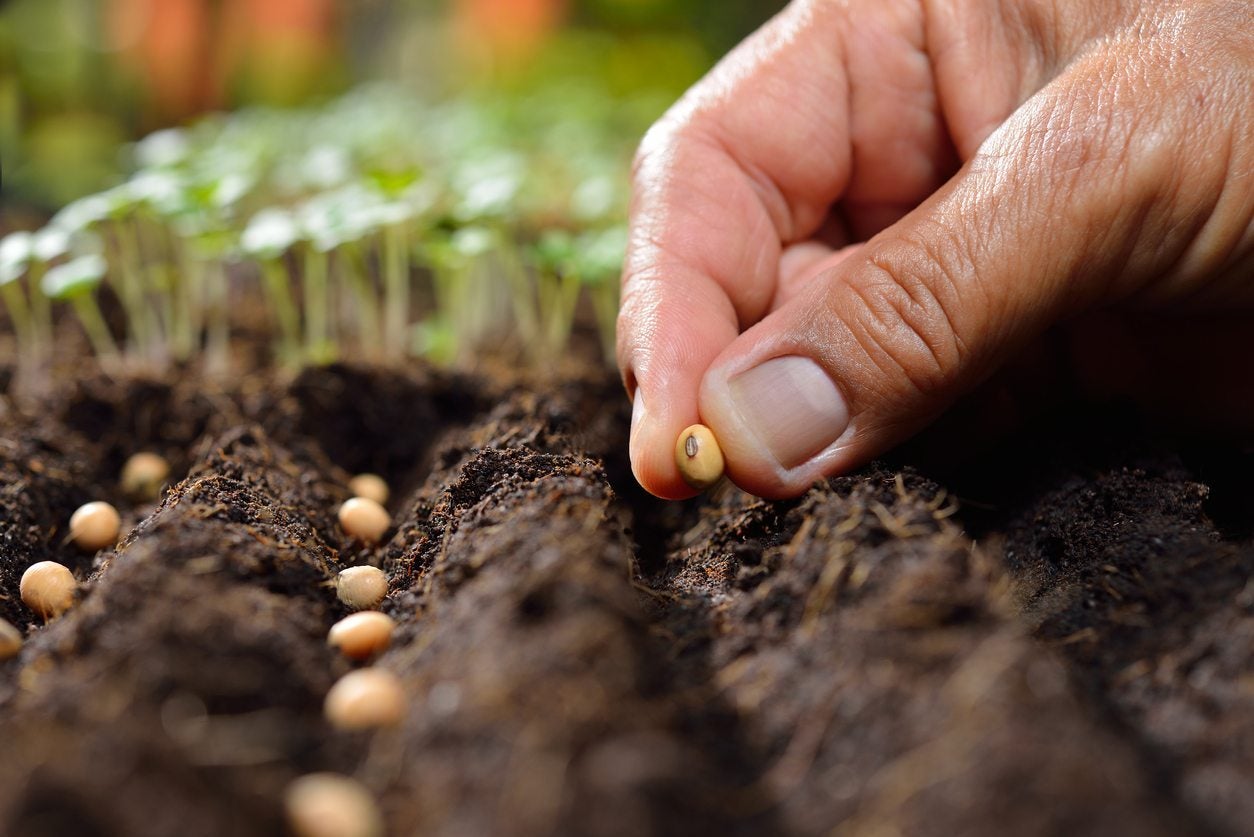How To Sow Seeds Thinly: Learn About Sowing Thinly In The Garden


One of the easier and less expensive ways to introduce new plants to the landscape is to plant seeds of your selected varieties yourself. Seed packets generally will tell you the spacing, seed depth, and other details for a foolproof sowing. However, occasionally they simply say "sow thinly." What does sow thinly mean? This term is used for very tiny seeds, each of which has the potential to become a little plant. It helps prevent wasted seed and overcrowding amongst the seedlings.
What Does Sow Thinly Mean?
Planting seeds is a joyful occupation, as you are beginning new plant life and the potential that each seed has to become food or simply an ornamental treasure. Many sowing instructions will ask you to sow thinly. This is a rather opaque instruction, however, as every gardener's notion of what is thin would tend to vary. It is a little bit like old recipes that ask for a pinch or dash of something. Even experienced bakers or gardeners would prefer more precise instructions in order to improve their chances of success. Some tips on how to sow seeds thinly should clear up any confusion and help your seeds grow their best. If we substitute the word "sparingly" for "thinly," perhaps the query can be cleared. In cases where the seeds are small, sowing too many can result in an overly crowded bed or flat. This leads for excessive competition for space, water, and nutrients, which slows growth. It can also encourage disease where there is little air circulation. If all the seeds sown come up, many will need to be thinned or pulled out. This is a waste of seed and can contribute to disruption of the tiny roots of those seedlings left behind. Thin seed spacing reduces waste, allows each little plant some space, and saves time and effort.
How Do I Sow Thinly?
If instructions ask you to sow thinly, what mathematical formula matches these requirements? The recommended spacing is .20 to .4 inches (5-10 mm.) apart. With very small seeds this can be difficult. There are seed syringes that can be helpful with very tiny seeds. They will deposit just one or two in each space. Another way to sow thinly is to mix seed with very fine sand. If sowing by hand, ensuring each seed has space between the next is how to sow seeds thinly. Such manual thin seed spacing may be challenging for seeds that are no larger than the tip of a pencil. If you have no access to a syringe or sand, do the best you can to separate the seed using a pencil or small stick before dusting them with soil.
Sowing Thinly in the Garden
What about planting seeds directly in the garden? Sowing thinly in the garden can be even more challenging. This is due to wind and other variables of nature. In many cases, a random scattering of the seed can be done and then thinning or pricking out will be required in a week or two. Keep in mind the neighboring seedling roots will be disturbed a bit, so ensure the soil is loose and well worked. This will make removing the extra plants easier and prevent root injury to those left behind. Often, the thinned seedlings are useful. Some larger plants can handle transplant of seedlings, while smaller edible plants, like lettuce, can be used in salads. These tiny delicious greens add an interesting texture and flavor and while not becoming mature food, are still not wasted.
Gardening tips, videos, info and more delivered right to your inbox!
Sign up for the Gardening Know How newsletter today and receive a free copy of our e-book "How to Grow Delicious Tomatoes".

Bonnie Grant is a professional landscaper with a Certification in Urban Gardening. She has been gardening and writing for 15 years. A former professional chef, she has a passion for edible landscaping.